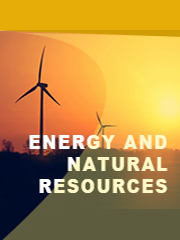TOP CATEGORY: Chemicals & Materials | Life Sciences | Banking & Finance | ICT Media

Download Report PDF Instantly
Report overview
The global "Wind Energy Recycling Market" was valued at US$ 450.7 million in 2023 and is predicted to reach US$ 653.2 million by 2030, exhibiting a Compound Annual Growth Rate (CAGR) of 6.3% during the forecast period (2023-2030).
The global key manufacturers of Wind Energy Recycling include Siemens Gamesa Renewable Energy S.A., GE, Vestas, Veolia, Makeen Power, Enel Spa, Arkema, LM Wind Power and ENGIE, etc. in 2023, the global top five players have a share approximately % in terms of revenue.
Wind Energy Recycling mainly refers to the recycling of wind turbine components. Their different parts are disassembled, sorted, and then sent through dedicated recycling channels. Concrete for foundations is reused elsewhere, steel and aluminum are sent to foundries or steel mills, and fiberglass from turbine blades is reused in other products such as fire hydrants.
This report aims to provide a comprehensive presentation of the global market for Wind Energy Recycling, with both quantitative and qualitative analysis, to help readers develop business/growth strategies, assess the market competitive situation, analyze their position in the current marketplace, and make informed business decisions regarding Wind Energy Recycling. This report contains market size and forecasts of Wind Energy Recycling in global, including the following market information:
We surveyed the Wind Energy Recycling companies, and industry experts on this industry, involving the revenue, demand, product type, recent developments and plans, industry trends, drivers, challenges, obstacles, and potential risks.
Total Market by Segment:
Chapter 1: Introduces the definition of Wind Energy Recycling, market overview.
Chapter 2: Global Wind Energy Recycling market size in revenue.
Chapter 3: Detailed analysis of Wind Energy Recycling company competitive landscape, revenue and market share, latest development plan, merger, and acquisition information, etc.
Chapter 4: Provides the analysis of various market segments by type, covering the market size and development potential of each market segment, to help readers find the blue ocean market in different market segments.
Chapter 5: Provides the analysis of various market segments by application, covering the market size and development potential of each market segment, to help readers find the blue ocean market in different downstream markets.
Chapter 6: Sales of Wind Energy Recycling in regional level and country level. It provides a quantitative analysis of the market size and development potential of each region and its main countries and introduces the market development, future development prospects, market space of each country in the world.
Chapter 7: Provides profiles of key players, introducing the basic situation of the main companies in the market in detail, including product sales, revenue, price, gross margin, product introduction, recent development, etc.
Chapter 8: The main points and conclusions of the report.